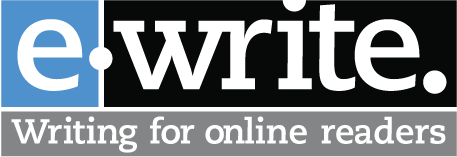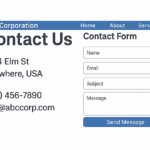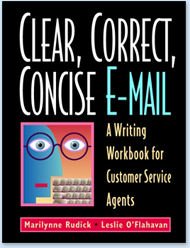Setting the right tone in email writing is more than just choosing the right wine to go with the meal. Tone in email – how you say what you say – is so important that an inappropriate tone can cause a reader to ignore, delete, or overreact to your message. A versatile writer can write the same thing using a variety of tones. (Would you prefer to be described as slender, slim, svelte, skinny, scrawny, or starved?) But all business email writers must be able to control the tone of their writing so their emails will have the results they intend.
What Is Tone?
Tone is the quality in your writing that reveals your attitude toward your topic and reader. Tone comes from your choice of words, the structure of your sentences, and the order of the information you present.
Why Is Tone So Important in Email Writing?
It’s easy for email writers to let their tone slip from professional to edgy or sarcastic. Email emboldens writers to express thoughts they would never say to a reader’s face. And email is written quickly, then sent. Most email writers don’t review their messages as carefully as they should. When they do review messages before sending, they’re looking at the content, not the tone. But tone is important. A flippant tone that the reader doesn’t find funny, or an angry tone can damage a relationship as well as progress on a company project.
Five Tips on Setting the Right Tone in Email
The best advice in setting the tone for your business email is to write in a tone that is closest to the way you would speak to your reader in person. These five tips will help you write email in a courteous and professional tone.
1. Keep Cool; Use Words Carefully
Your mother probably told you that if you can’t be nice, don’t say anything at all. When writing email, if you can’t be nice, wait. Wait an hour if you’re irritated, an afternoon if you’re angry, and a day if you’re furious. For many reasons, it’s never appropriate to lose your cool in email:
- Email is easily forwarded so the recipient can share your email rant with lots of readers.
- Flames beget flames. If you use an angry tone in email your reader will probably answer in anger. While the tone escalates, the work isn’t getting done and you make an enemy of a colleague or client.
- Your employer owns your email. It’s not yours and it’s not private. Don’t write in a tone you’d be uncomfortable sharing with your boss.
Remember that well-chosen words create a personal, professional tone in email. You can’t rely on emojis to set the tone in your email. Choose words because they carry meaning to all readers, some of whom may not appreciate emojis or understand abbreviations.
2. Choose an Appropriate Greeting and Closing
The greeting in your email establishes your relationship to your reader. Most writers of business email begin their messages with “Hi” or “Hello” followed by the recipient’s first name: “Hello, Fred.” Some writers begin the message with the first name only. “Dear” is still an acceptable greeting in email, not merely a vestige of outdated “print” culture. If you’re writing an email to a group, use the group name in the greeting. Don’t begin your message “Hi, guys” or “Everybody.” Though these casual greetings may sound friendly, it is actually just vague. Try “Dear Leadership Team” or “Hello, Interns.” A more specific greeting sets a focused tone to the message. Do write a closing for your message. Beside making it easier for your reader to find the end of the message, the closing seals the tone and serves as a final reminder of the main point or requested outcome. Try an action-oriented closing such as “I’ll call you on Tuesday to schedule the meeting.” Or go for a gracious closing: “Thanks for your help,” or “I look forward to meeting you.”
3. Use Personal Pronouns
To make your email writing personal, address your reader directly. Use the pronoun “you.” Write: “You may use the Executive Health Club on weekends.” Avoid: “Employees may use the Executive Health Club on weekends.” Use the pronouns “I” and “we” when referring to yourself or your organization. Write: “I discovered that our mail room clerks were throwing away most of the promotional fliers.” Avoid: “It was discovered that most of the promotional fliers were being thrown away.” Write: “Because you used the product incorrectly we will not refund your money.” Avoid: “Mannheim Manufacturing cannot refund your money because the product was used incorrectly.”
4. Write in Active Voice
Active voice makes your email tone clearer and more direct. Active voice makes the “doer” in the sentence clear. When you write in active voice, your email tone won’t sound bureaucratic the way passive voice does. Write in the active voice: “We will gladly provide funding and materials just as soon as the foundation accepts your proposal.” Avoid passive voice: “Funding and materials will be provided promptly when the proposal has been accepted.”
5. Sequence Information to Maintain a Professional Tone
The beginning of an email sets the tone and emphasizes content for the message. Set a direct tone by communicating the most important information first. But what if the most important information is bad news: a cut in funding, a rejected application, the immediate transfer of the hardest-working person in the department? Will leading with the bad news damage your tone? The answer is no. Even when the main point of the message is bad news, you must lead with it. Burying the bad news somewhere in the middle or end of the message is harmful; readers may miss it or misinterpret its importance. We all know that the volume of email we answer each day makes it difficult to write each message thoughtfully with the correct tone. But if we want our messages to achieve our goals, we must set the tone in email just as we do when we speak. Let Humpty Dumpty be your guide, quoted here by Lewis Carroll: “When I use a word,” Humpty Dumpty said in rather a scornful tone, “it means just what I choose it to mean–neither more nor less.”
— — — — — —
Photo by Emily Webster on Unsplash








0 Comments